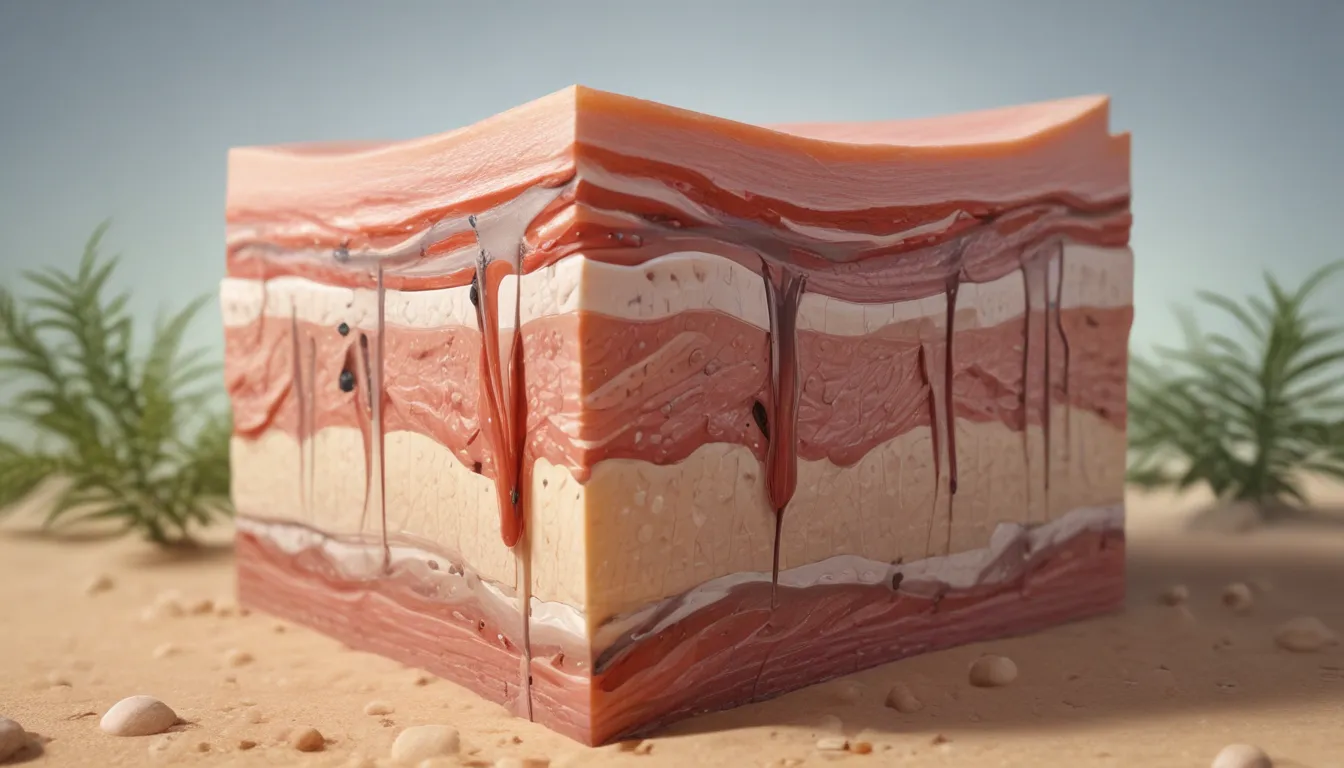A Note About Images: The images used in our articles are for illustration purposes only and may not exactly match the content. They are meant to engage readers, but the text should be relied upon for accurate information.
The integumentary system, a sophisticated organ system encompassing the skin, hair, nails, and glands, serves as a vital shield against external threats while also maintaining the body’s health. In this enlightening article, we delve into the intricacies of the integumentary system, unveiling 10 astounding facts that spotlight its complexity and significance in our daily lives. Join us on this journey as we explore the remarkable capabilities of our skin, the surprising functions of our hair and nails, and the crucial role this system plays in our overall well-being.
Unraveling the Wonders of the Integumentary System
- The integumentary system comprises the skin, hair, nails, and glands, making it the body’s largest organ system.
- It performs essential functions such as protection, temperature regulation, and vitamin D synthesis.
- Skin, hair, and nails are not just external coverings; they play vital roles in maintaining our health and well-being.
The Marvel of Skin: The Primary Organ of the Integumentary System
The skin, a complex and versatile organ, acts as a protective barrier against environmental hazards such as UV radiation, pathogens, and physical injuries. It also plays a key role in regulating body temperature and synthesizing vitamin D, showcasing its multifaceted nature and indispensable contributions to our overall health.
The Mystique of Hair: Composed of Keratin, the Miracle Protein
Hair, composed of keratinized cells originating from hair follicles in the skin, serves various functions, including insulation, protection, and sensory perception. Its intricate structure and diverse functions underscore the importance of hair in our daily lives beyond mere aesthetics.
Nails: More Than Just Aesthetics – The Hardened Protectors
Nails, made of hardened keratin produced by specialized cells in the nail matrix, serve as protective shields for our fingertips and enhance the dexterity of our fingers. Their role in safeguarding and enhancing our manual abilities showcases the remarkable intricacies of the integumentary system.
The Symphony of Thermoregulation: A Crucial Role of the Integumentary System
The integumentary system plays a pivotal role in thermoregulation by regulating heat loss and heat gain through blood vessels in the skin. Sweat glands contribute to cooling the body through evaporative cooling, ensuring the maintenance of a constant body temperature for optimal functioning.
Melanocytes and Skin Color: The Beauty of Diversity
Melanocytes, specialized cells in the skin, produce melanin, the pigment responsible for skin, hair, and eye coloration. The varying amounts and types of melanin produced by individuals contribute to the diverse spectrum of skin tones and highlight the beauty of human diversity.
The Layers of Skin: Unveiling the Complex Architecture
The skin comprises three main layers: the epidermis, dermis, and hypodermis. The epidermis serves as the outermost protective barrier, while the dermis harbors blood vessels, nerve endings, and essential structures. The hypodermis, or subcutaneous tissue, consists of fat cells that provide insulation and cushioning for the body.
Sebaceous Glands: The Secret Behind Skin Moisture
Sebaceous glands produce sebum, an oily substance that moisturizes the skin and hair. Beyond its hydrating properties, sebum also exhibits antimicrobial qualities, safeguarding the integumentary system against potential infections and maintaining its health.
Sensory Perception: Exploring the Skin’s Sensational Abilities
The skin houses various sensory receptors that detect sensations such as touch, pressure, temperature, and pain. These receptors transmit signals to the brain, enabling us to perceive and interact with our environment effectively, underscoring the crucial role of sensory perception in our daily experiences.
The Vital Role of the Integumentary System in Vitamin D Synthesis
When exposed to sunlight, the skin plays a pivotal role in synthesizing vitamin D, an essential nutrient for bone health and various bodily functions. This highlights the integral role of the integumentary system in supporting overall health and well-being through its diverse functions.
Embracing the Unparalleled Complexity of the Integumentary System
The integumentary system, with its intricate network of skin, hair, and nails, embodies the marvels of the human body. From shielding internal organs to regulating body temperature and fostering vitamin D synthesis, this system plays a vital role in ensuring our survival and adaptation to the environment. By understanding and appreciating the integumentary system, we can cultivate a deeper awareness of the importance of proper skincare, nutrition, and regular check-ups to safeguard our health and youthful appearance for years to come.
FAQs: The Road to Enhanced Understanding
- What is the integumentary system?
-
The integumentary system comprises the skin, hair, nails, and glands, serving as a protective barrier, regulating body temperature, and aiding in vitamin D synthesis.
-
Why is it important to care for the integumentary system?
-
Proper skincare, nutrition, and regular check-ups are essential to maintain the integumentary system’s health, prevent diseases, and promote overall well-being.
-
How do hair and nails contribute to the integumentary system?
-
Hair and nails, being appendages of the skin, offer protection, sensory perception, and assistance in regulating body temperature and shielding against UV radiation.
-
Can the integumentary system reveal underlying health issues?
-
Changes in the skin, hair, or nails can sometimes indicate underlying health conditions or deficiencies, prompting the need for medical attention.
-
How does the integumentary system interact with other body systems?
-
The integumentary system collaborates with various body systems, including the immune, skeletal, and endocrine systems, to support overall health and functioning.
-
Can the integumentary system repair itself?
-
The integumentary system exhibits remarkable regenerative abilities, allowing it to repair minor injuries and maintain its integrity through processes like wound healing and skin cell regeneration.
-
What are the main functions of the integumentary system?
-
The integumentary system serves multiple functions, including protection from pathogens and injuries, sensory perception, temperature regulation, waste product excretion, and vitamin D synthesis.
-
How does the skin protect the body?
-
The skin acts as a physical barrier against harmful substances and microbes, contains immune cells for defense, and participates in wound healing processes, ensuring the body’s protection and well-being.
-
How does the integumentary system regulate body temperature?
-
Through mechanisms like sweat production and blood vessel dilation/constriction, the integumentary system plays a pivotal role in regulating body temperature and maintaining homeostasis.
-
Can the integumentary system be affected by diseases?
- Yes, the integumentary system is susceptible to various diseases, including infections, allergies, autoimmune disorders, and skin cancers, underscoring the importance of early detection and treatment.
In summary, the integumentary system stands as a testament to the intricacy and resilience of the human body. By nurturing and understanding this remarkable system, we can ensure our well-being, celebrate our diversity, and embrace the beauty of our existence. Join us in acknowledging the extraordinary wonders of the integumentary system and embark on a journey of self-discovery and appreciation for the remarkable vessel that is our body.






